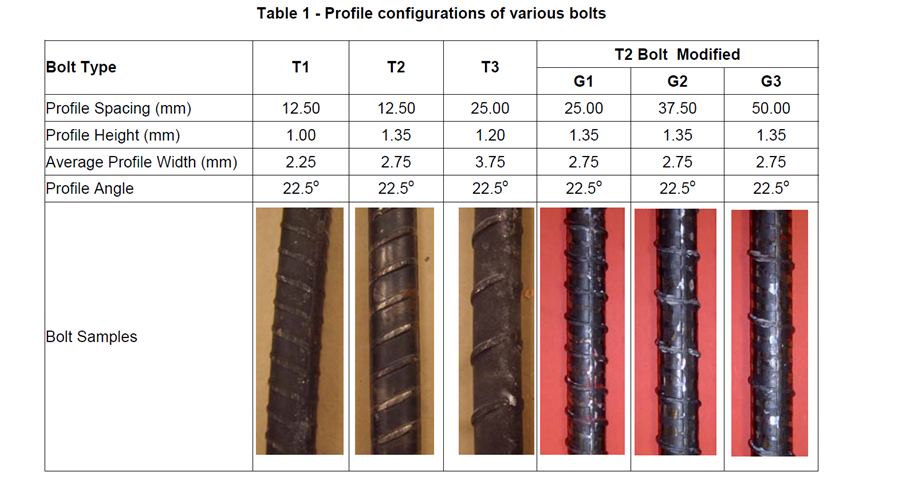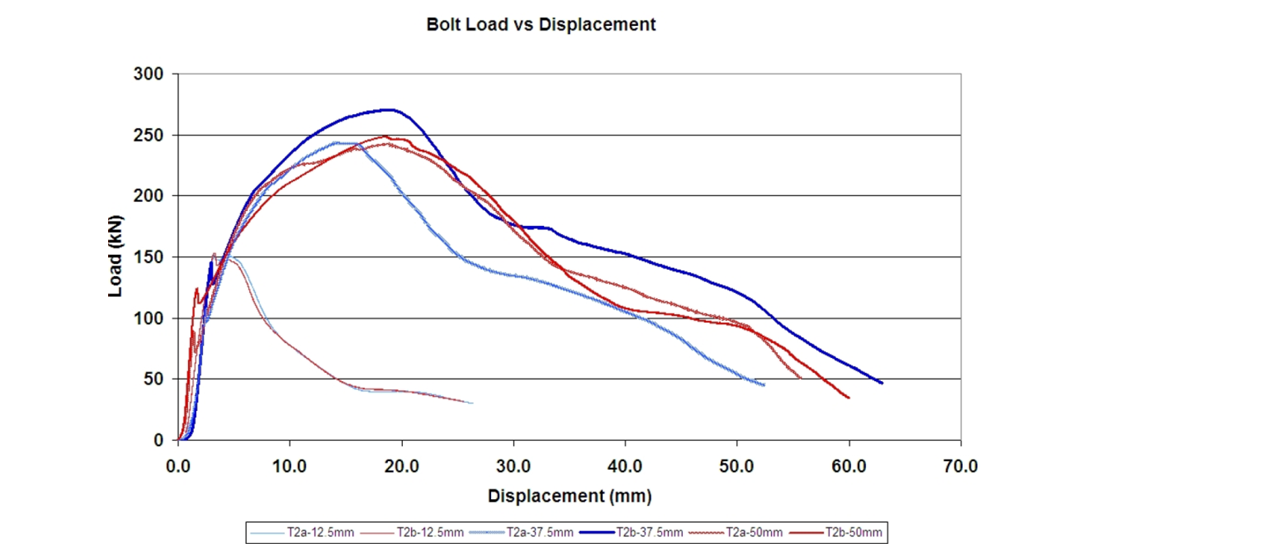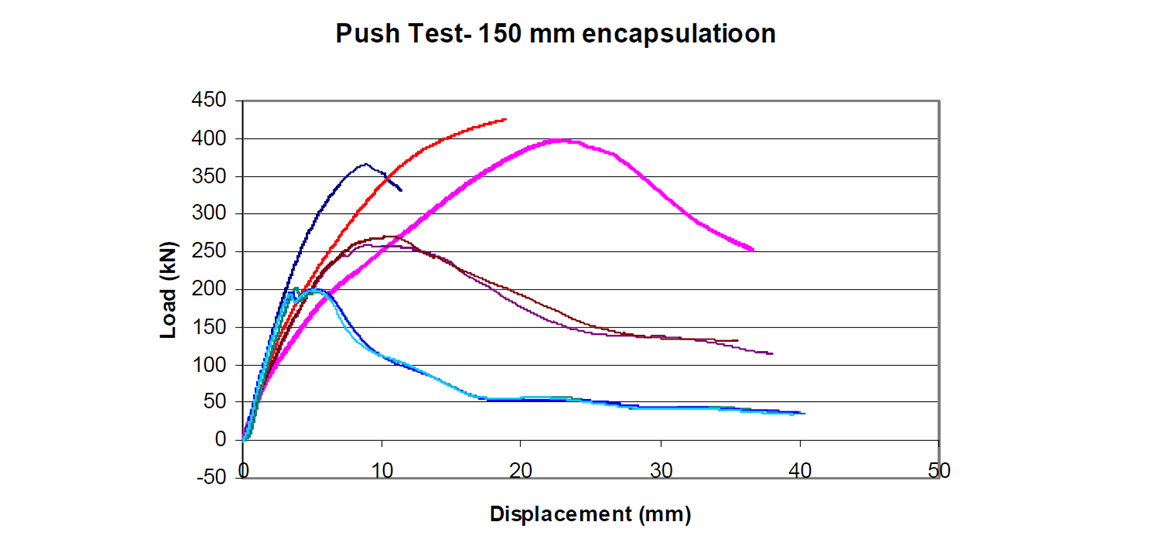BOLT SURFACE PROFILE
Theories of Rock Bolting 0 CommentThe profile configuration of rockbolts is defined by the rib profile shape, and height, angle of wrap and spacing or distance between the ribs. Both bolt profile shape and profile spacing (rib spacing) have been found to influence the bonding capacity of the grouted rock bolt. The bolt surface profile configuration has greater importance to rock bolt than the steel rebar used in civil engineering construction, because the rock bolt is subjected to greater dynamic loading than the steel rebar.
A mining group lead by Professor Aziz (2004, 2006, 2008) at the University of Wollongong carried out a series of studies on the effect of profile spacing on loaded transfer capacity of the loaded bolt. The following test results show the influence of increased profile spacing on bolt load capacity. Two series of tests were carried out on bolts in cylindrical steel sleeves. In the first series of tests, bolts with different profile spacing were push tested in 150 mm steel sleeves, while the second set of tests were made under pull conditions using 115 mm steel sleeves.
The profile configuration of rockbolts is defined by the rib profile shape, and height, angle of wrap and spacing or distance between the ribs. Both bolt profile shape and profile spacing (rib spacing) have been found to influence the bonding capacity of the grouted rock bolt. The bolt surface profile configuration has greater importance to rock bolt than the steel rebar used in civil engineering construction, because the rock bolt is subjected to greater dynamic loading than the steel rebar.

PULL TEST
The load-displacement results of pulling out tests are shown in Figure 16. When compared to the standard Bolt Type T2 (profile spacing 12.5 mm), all other bolts experienced an increase in the average maximum peak load capacity. Of more significance was the increase in loading capacity of both Bolt Types T2G2 and T2G3 respectively. The average peak load of the T2-G2 bolts with profile spacing of 37.5 mm was 69% greater than that of the standard Bolt Type T2. Similarly for the Bolt Type T2G3, with 50.0 mm profile spacing, there was an increase of 61% with respect to Bolt Type T2.

PUSH TEST
As can be seen from the test result in Figure 15, the loading capacity of the bolt increased with increased profile spacing. However, the highest loading capacity was achievable with profile spacing of 37.5 mm rather than 50 mm rib profile spacing. The loading of 37.5 mm spaced bolt was halted as the unencapsulated bolt section began to bend. For the indicated final level push load of 425.8 kN shown for 37.5 mm spaced profiled bolt (Bolt Type T2 G2) in Figure 3, this is 7% greater than the maximum load achievable of Bolt Type T2 G3 of 50 mm profile spacing, and is 16% greater than of Bolt T2 G1 of 25 mm profile spacing, as shown in Table 2. The loading capacity of T2 G2 bolt is 97.5 % greater than the original Bolt TypeT2, with 12.5 mm profile spacing. It should be noted that the differences between the load bearing capacity between the 25 mm profile spaced Bolt Types T2 G1 and T3 is attributed to the surface roughness of the Bolt Type T2G1, which was resulted from the removal of the profile from Bolt TypeT2. The effect of bolt surface roughness on the load bearing capacity of a bolt was previously reported by Aziz and Webb (2003). It is also equally true that the variations between the load bearing capacity between Bolt Types T2G2 and T2G3 could have been influenced by the increased surface roughness of Bolt Type T2G3, nevertheless, the bearing capacity of Bolt Type T2G3 is significantly higher than the T2G3.

